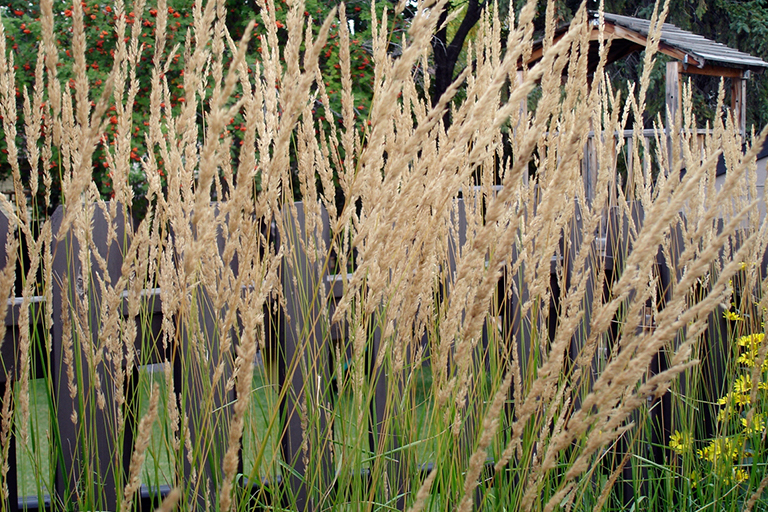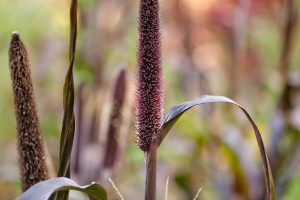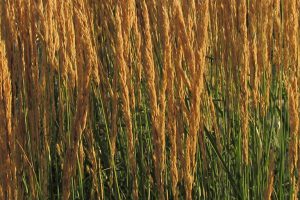By Vicki Spencer, Master Gardener
During the dog days of summer, garden plants seem thirstier than ever, yet we are constantly reminded to reduce water consumption. One way to minimize water use is to incorporate ornamental grasses into garden designs. Both natives and hybrids tend to be tolerant of different soils, grow in sun and shade and are easy to maintain. Although ornamental grasses should be planted before July, it’s still is a good time to determine where you want to add color, texture and movement to your garden next spring.
If you live on Colorado’s eastern plains (including the Front Range), you can easily incorporate short prairie grasses like buffalo grass and blue grama into your garden. Blue grama — designated Colorado’s state grass to build awareness of the importance of native grasses — is a tufted, warm season grass noted for seed spikes that hang from one side of its flowering stems. It typically grows less than a foot high and wide. Although native to prairies and open rocky woodlands, it was a lovely addition to my high-altitude Gunnison garden.
Aside from the natives, there are many hybrid ornamentals that are popular for the diversity they offer. Purple majesty millet, which was derived from ordinary millet, is a drought tolerant annual grass with unusually shaped purple foliage and cattail-like flower plumes that change from deep purple to gold as it matures. Its seed spikes should be left on the plant to provide bird food. Like most grasses, it’s best to plant after the last spring frost, but it can be seeded into the summer as long as it has 60 to 70 days to mature. It requires full sun and moist, well-drained soil, so mulching is important.
Maiden grasses (originating in Asia) also require more moisture than Colorado’s natives, but perform well in xeric gardens. Their arching leaves and silky flower tassels provide a lovely contrast to purple majesty millet. Ravenna grass requires similar growing conditions. It is a popular ornamental because of its hardiness and height. Growing 5 to 12 feet tall, it makes a perfect screen for unsightly areas. Its gray green leaves turn to orange or purple in the fall and its silvery white flowers, clustered in plumes, make it a focal point. Although hardy, it should be sheltered from the wind to prevent breakage. Plant with caution as it is highly invasive.
Feather reed grass or Karl Foerster (named for the German discoverer) is a colorful grass with feathery stalks emerging reddish brown in the spring and turning golden brown in the fall. It’s a lovely backdrop for roses and perennials and can be combined with Russian sage for contrast. As a cool season grass, it looks beautiful throughout the winter.
This is just a small sampling of the many ornamental grasses popular in Colorado. Since temperatures, rainfall and soil conditions vary across the state, it’s a good idea to talk with local experts when selecting your garden plants.
Gardener Vicki Spencer has an eclectic background in conservation, water, natural resources and more.



